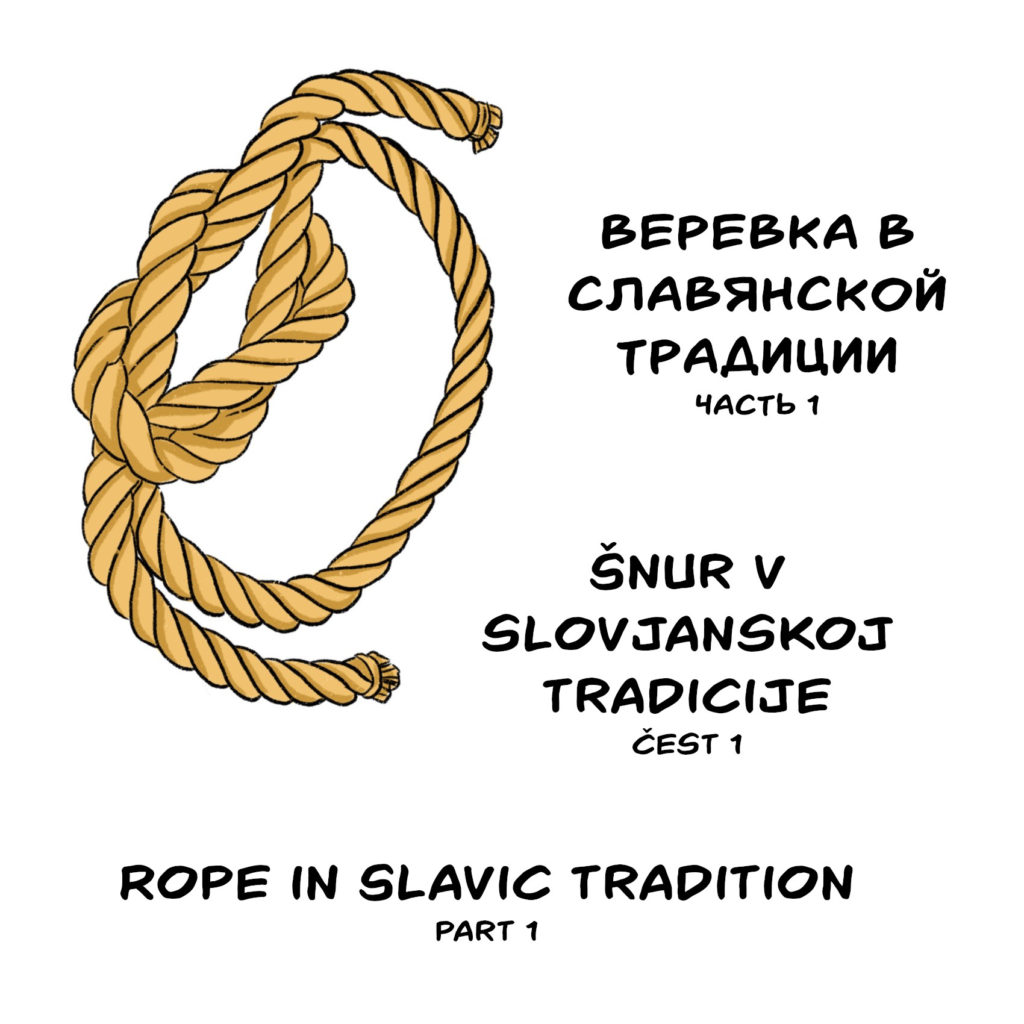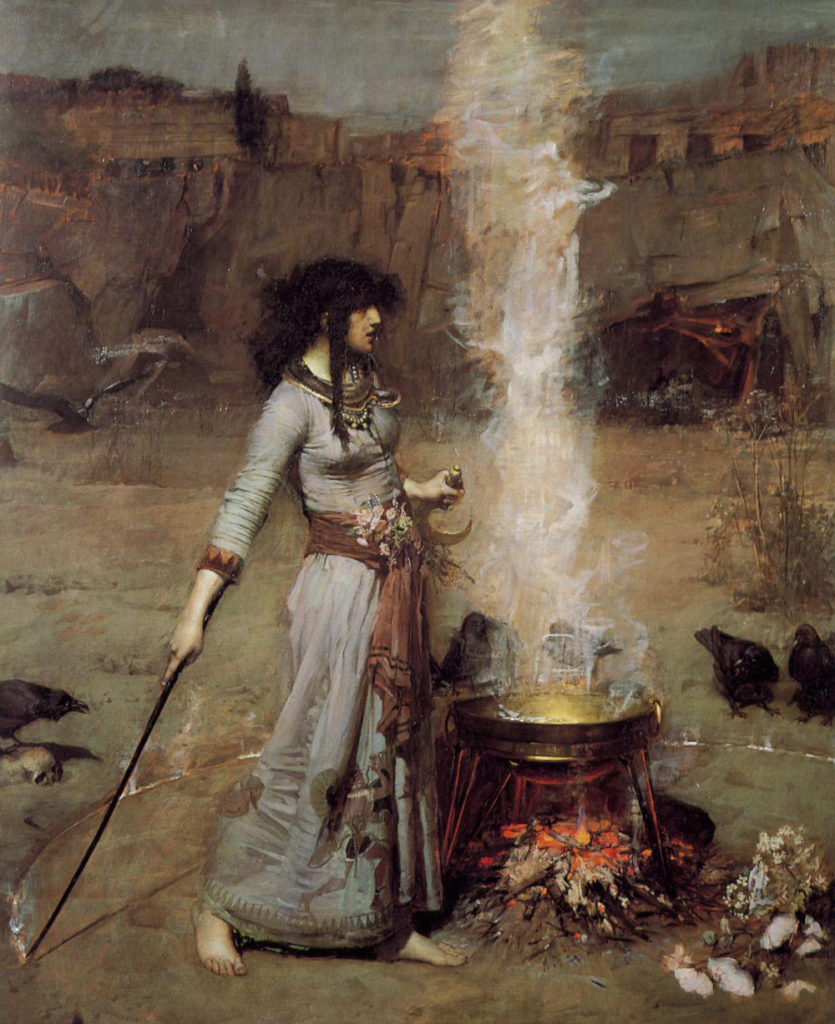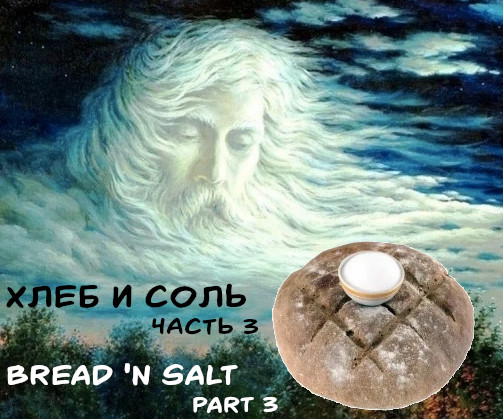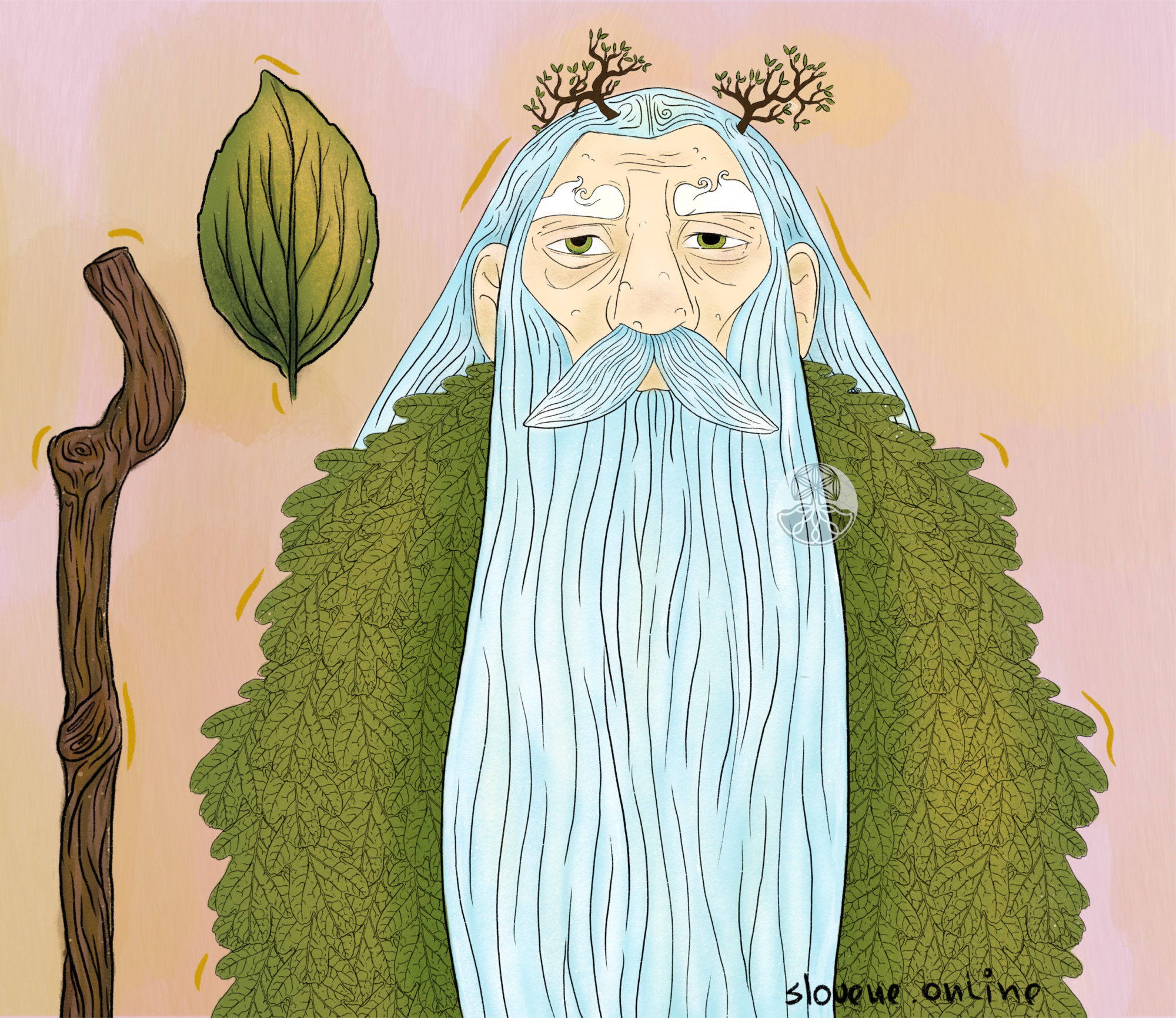Lapti (bast shoes) and evil spirits.
ꏍ
Bast shoes are often mentioned in connection to mythological creatures. Leshy and Polevik (field spirit) are often portrayed wearing lapti. Weaving bast shoes is a favorite activity of evil characters, and Vodyanoi in particular.
ꏍ
Bast shoes were also used to appease evil spirits. Vologda fishermen and millers threw bast shoes into the water to get help from Vodyanoi. If the cattle were lost, the peasants of the Smolensk region appealed to Rusalki. They went to the forest and brought with them bast shoes, footcloth, bread & salt and left it in a sack on a tree with the words: “Please, Rusalki, accept my gift, and return the cattle!”. In the Kostroma region, when moving to a new house, the owners went to the old yard with one bast shoe and invited Domovoy to go with them in that shoe. In the Vladimir region, people supplied Domovoy with shoes, by hanging old worn “little lapti” in the yard.
ꏍ
The need for shoes for Domovoy is understandable. But what would Rusalki do with them? 😉
ꏍ
More interesting facts can be found in: “Slavic Antiquities” – encyclopedic dictionary in 5 volumes by Institute for Slavic Studies of the Russian Academy of Sciences.
ꏍ

Rope in Slavic tradition – part 1
A common rope used today, was also considered a talisman by the ancient Slavs. It protected from curses and even helped to neutralize evil spirits.
ꏍ
Before the wedding, the North Russian Slavs tied a rope (a belt or a fishing net) over the naked body of the bride and groom to protect them from evil spells. For the same purpose, the Serbs surrounded the bed of a woman in labor and a child with a rope. Slavs would also put a red rope or a ribbon on a hand of a child or a pregnant woman, as well as just a beautiful girl, to protect them from being cursed. In general, using rope as a belt, was one of the ways to create a magic circle, which ensured the inviolability and safety of the person in it.
ꏍ
Macedonians believed that a person could tie a vampire by throwing a noose around his neck with a reed rope. The Poles believed that a rope woven from nine bast strips was suitable for capturing Vodyanoi. They also were ready to chase away Mara, who came at night to strangle people, by beating her with a rope or a belt.
ꏍ
To be continued…
ꏍ
Spring and demons in Slavic tradition
For the ancient Slavs, spring was not only the time of the nature awakening, but also the time of the increased activity of various mythological creatures. Thus, the beginning of the river ice drift was associated with the awakening of the Vodyanoi (water spirit). Every spring the Russians sacrificed a horse and other gifts to him, drowning them in the river. Among the Kashubians, when the ice began to crack, the parents told their children: “Strёx są ju zbudził” (Vodyanoi awoke).
ꏍ
The beginning of March and Maslenitsa week (end of winter celebration) among the southern Slavs were considered a veshtitsa spree period. Serbs believed that veshtitsa (witch) eats babies and human hearts, and Montenegrins hid needles on March 1, believing that witches could use them to take out a human heart.
ꏍ
In Serbia, it was believed that on veshtitsa steal or strangle children or suck their blood. To deceive them, mothers took their children to their bed, and instead of babies they put a pralnik (wooden tool for laundry), a doll or a whisk in the cradle.
ꏍ
As a talisman, Slavs generally used garlic, because veshtitsa cannot stand its smell. They rubbed their feet, forehead and chest for protection. Interestingly, swaying on a swing was a popular way of protecting against veshtitsa in Serbia: «да га не поjеду» (so that the person would not be eaten).
ꏍ
To be continued…
ꏍ
Picture: “The Magic Circle” by John Waterhouse.

Bread and salt – part 3
Have you ever tried to change the weather? Our Slavic ancestors had many rituals for this, including the use of bread and salt. Among the eastern and southern Slavs, for protection from hail or thunderstorms, bread and salt were offered to a thundercloud in order to appease it. Slavs could set a table outdoor or offer bread and salt on a shovel or in a “dezha” (special wooden tub for sourdough bread making). And during a drought, they threw bread and salt into a well, or went out with them into the field and prayed for rain.
ꏍ
Bread and salt were thrown into the river so that the water would carry away all the diseases, or as protection from flooding. The Belarusians put them in a fishing net so that Vodyanoi would help with a successful fishing; the Bulgarians threw them to Khala along with the money so that Khala would not eat the cattle bathing in the lake.
ꏍ
They were also used for divination. To determine the fate of a relative, Slavs placed salt, bread, oven clay and charcoal on the corners of the table. Then they would hold a bread on a string to see if it deviates in the direction of bread and salt (then the relative is alive), or to clay and charcoal (than the relative is dead).
ꏍ
To be continued…


